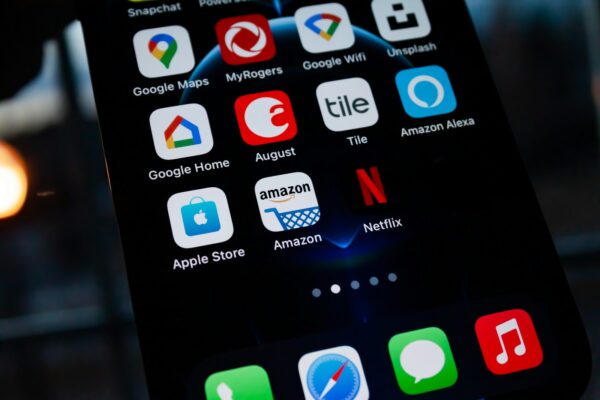Many people still follow old tech rules that don’t work anymore. Tech myths spread fast on social media and can lead to bad choices about our devices. This guide will bust the top 10 false tech beliefs that might be costing you time and money.
Read on to learn the real facts about your favorite gadgets and make smarter tech choices.
Private/Incognito Mode Is Completely Anonymous
Tech myths often lead to wrong ideas about online safety. One big myth involves private browsing modes in web browsers.
Private or incognito mode does not make you invisible online. Your internet provider still sees what you do online. Websites track your visits through your IP address. The mode simply stops your browser from saving your history and cookies.
Browser fingerprints can still show who you are. This mode won’t protect you from hackers or bad software. It also fails to block phishing scams that try to steal your info. Your online actions stay visible to many watching eyes, even in private mode.
Private browsing is like wearing a mask in a crowd – people can’t see your face, but they can still follow your footsteps.
Macs and iPhones Are Immune to Malware
Many people think Apple devices can’t get viruses, but this isn’t true. Macs and iPhones face real threats from malicious software and virus attacks daily. Apple products attract fewer hackers because fewer people use them compared to other devices.
Still, cybersecurity threats exist and can harm these devices through different ways. Security vulnerabilities pop up often in Apple’s system, like the recent IOMobileFrameBuffer problem.
Your Apple device needs strong protection against hacker targeting and mobile security issues. Regular device updates help fix weak spots that bad guys might use to break in. Jailbroken devices face bigger risks of getting infected with malware.
Smart users know they must guard their Macs and iPhones just like any other computer or phone. Malware creators make special bugs just for Apple products, so no device is totally safe.
Artificial Intelligence Has Reached Sentience
Artificial Intelligence has not reached human-like awareness yet. Smart machines can play chess, drive cars, and talk to us, but they don’t truly think or feel. These systems run on complex math and data patterns through neural networks and machine learning.
They follow set rules to do tasks, but they can’t make real choices or understand things like humans do.
Today’s AI tools can process natural language and solve problems faster than people. Deep learning helps computers spot patterns in pictures and text. Still, these machines don’t have real emotions or self-awareness.
They simply match patterns and give responses based on their programming. The idea of conscious machines remains in science fiction for now.
Smart Devices Are Always Listening
Moving beyond AI myths, smart devices spark their own set of concerns. Many people worry that Alexa and other smart devices listen to every word. This idea is false. Smart devices only record after you say their wake word.
Users have full control over their smart device settings. The microphone can be turned off at any time. Voice recordings can be deleted through the Alexa app or website. Amazon lets users opt out of saving voice data.
Alexa Guard works differently – it listens for specific sounds like glass breaking or smoke alarms only if you turn this feature on. The device does not spy on daily conversations or store private talks without permission.
The Higher the Megapixels, the Better the Camera Quality
Just like smart devices don’t always listen, cameras don’t always need more megapixels to take great photos. Many people think a higher megapixel count means better pictures, but this isn’t true.
Camera quality depends on many parts working together. The sensor size plays a big role in how good your photos look. A camera with fewer megapixels but a larger sensor can take much better photos than one with more megapixels and a tiny sensor.
Your camera’s lens quality makes a huge difference in picture sharpness. Good lenses help capture clear details and true colors. Digital photography has grown past just counting megapixels.
Modern phones and cameras use special tech to make photos look amazing, even with lower megapixel counts. The next time you shop for a camera, check both the sensor size and lens specs instead of just looking at megapixels.
These features will tell you more about the real photo quality you can expect.
You Must Fully Deplete Your Battery Before Charging
The old rule about draining your phone battery to zero percent is wrong. Modern phones use lithium-ion batteries that work best with partial charges. Your phone battery stays healthy if you keep it between 20% and 80% charged.
Full drains can harm your battery life over time.
Charging your phone often in small amounts helps the battery last longer. This works better than waiting until your phone dies to plug it in. Smart charging habits make your phone battery work great for years.
Your battery will thank you for keeping some power in it at all times.
Overnight Charging Damages Your Phone’s Battery
Modern phones have smart charging systems that stop power flow at 100%. Your phone battery won’t get damaged if you charge it overnight. Most phones now use lithium-ion batteries that handle overnight charging well.
These batteries know when to stop taking power.
Keeping your battery between 20% and 80% helps it last longer. Fast charging won’t hurt your battery life much. Your phone might move between 99% and 100% charge during the night, but this is normal.
Using the charger that came with your phone gives the best results for battery health and safety.
More Bars on Your Phone Equals Better Service
Your phone’s signal bars don’t tell the whole story about service quality. Many people think more bars mean perfect calls and fast internet. This is not true. Network traffic can make your service slow even with full bars.
Your calls might drop or sound bad if too many people use the network at once. Signal strength shows only how well your phone connects to the cell tower.
Cell phone signals face many blocks in their path. Trees, buildings, and hills can stop signals from reaching your phone. Bad weather can also hurt your service quality. Your phone might show full bars, but other things can still mess up your calls.
The real test of good service comes from how clear your calls sound and how fast your data works. Signal bars are just one small part of the bigger picture.
Internet and World Wide Web Are the Same
Many people mix up the Internet and World Wide Web as one thing. The Internet works as a huge network that links computers and devices across the globe. The World Wide Web is just one part of the Internet.
It holds web pages and documents that we can see through web browsers.
The Internet started before the World Wide Web came along. Think of the Internet as a big road system, while the Web is like the cars that drive on it. The Internet carries lots of other stuff too, like email and file transfers.
These two systems work together but serve different jobs. Next up, we’ll talk about why using any charger isn’t good for your device.
Using Any Charger Is Fine for Your Device
Using random chargers for your device puts it at risk. Your phone needs the right power adapter to work safely. Wrong chargers can cause too much heat and hurt your battery life. The best choice is to stick with the charger that came with your device.
Cheap, fake chargers can be very unsafe and might start fires.
Smart devices need specific power levels to charge the right way. Each mobile device charger has its own voltage and current settings. Your wall adapter must match what your device needs.
Certified USB chargers keep your device safe and working well. Bad charging habits can make your battery die faster. Next, let’s explore some amazing smart home devices that can make your life easier.
Explore the Coolest Smart Home Devices
Smart home devices make life easier and more fun. Modern homes now feature voice-controlled lights, smart thermostats, and security cameras you can check from your phone. These high-tech gadgets save energy and money while keeping your home safe.
Smart speakers play music, answer questions, and control other devices with simple voice commands.
Your home can work better with connected appliances and smart systems. Automated door locks let you check who comes and goes. Smart fridges tell you when food runs low. Motion sensors turn lights on as you walk into rooms.
These futuristic tools create a home that responds to your needs. The next section will show you how to pick the right tech for your home.
Knowing the truth can help you use technology more effectively and maintain your devices better.
Tech myths can harm how we use our devices. Many people think incognito mode keeps them hidden online, but websites still track their activity. Others believe Macs and iPhones never get viruses, yet these devices need regular updates to stay safe.
Some folks worry about charging phones overnight, but modern batteries handle it just fine.
False tech beliefs often come from old facts that don’t apply anymore. AI tools may seem smart, but they aren’t truly conscious beings. Data breaches show us that online privacy needs more than just private browsing modes.
Good device care means learning current facts about technology and staying up-to-date with security measures.




